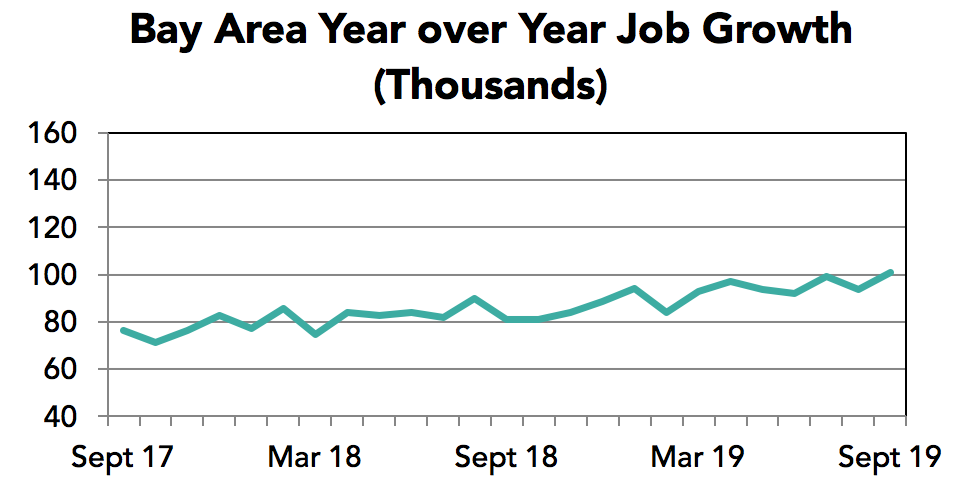
Labor Force Growth Returns, Unemployment Continues to Decline
The highlights:
• The Bay Area added 800 jobs in following August (seasonally adjusted), following gains of 8,100 jobs in August (revised up) and 101,700 in the past 12 months. State job growth has rebounded in recent months and CA job growth now outpaces the nation.
• The job growth in for the past year was primarily accounted for by gains in the Oakland, San Francisco and San Jose metro areas.
• The regional unemployment rate was 2.2% in August down from 2.6% a year ago and the lowest since the dot.com boom. Unemployment fell to 95,000.
• Labor force growth picked up after several slow months partially answering the question of where the workers came from.
The Bay Area Continues to Outpace the State and Nation in Job Growth
Year over year job growth of 2.5% (up from 2.3% last month) far outpaced the 1.5% growth for the nation and 1.9% gain in the state. The state once again is outpacing the nation.
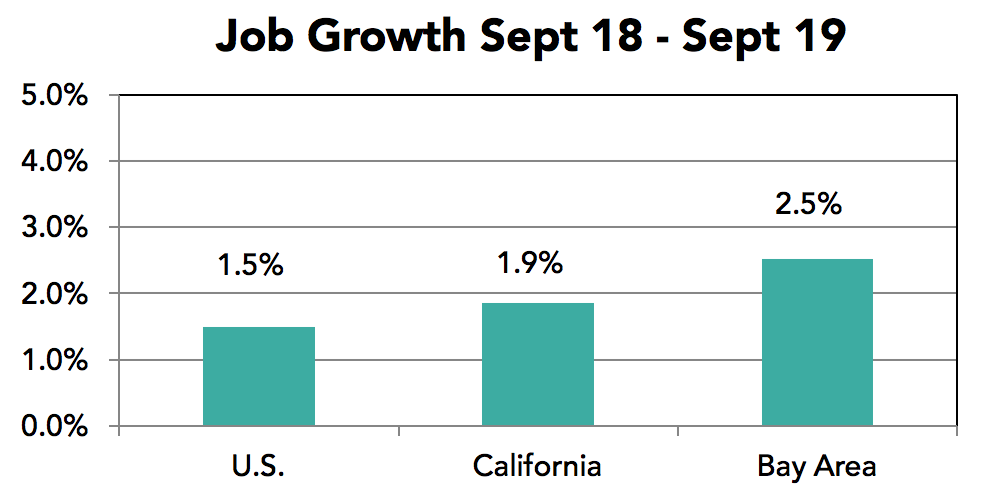
The San Francisco metro area led the region in job growth over the past year followed by the San Jose metro area with slower growth in other metro areas.
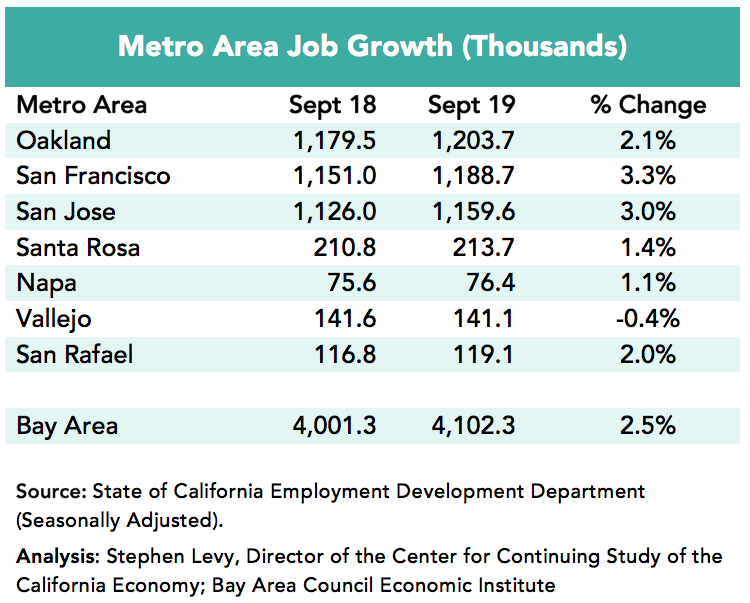
Unemployment rates (2.2% for the region) in September 2019 were well below year earlier rates and at levels not seen in almost 20 years at the height of the dot.com boom.
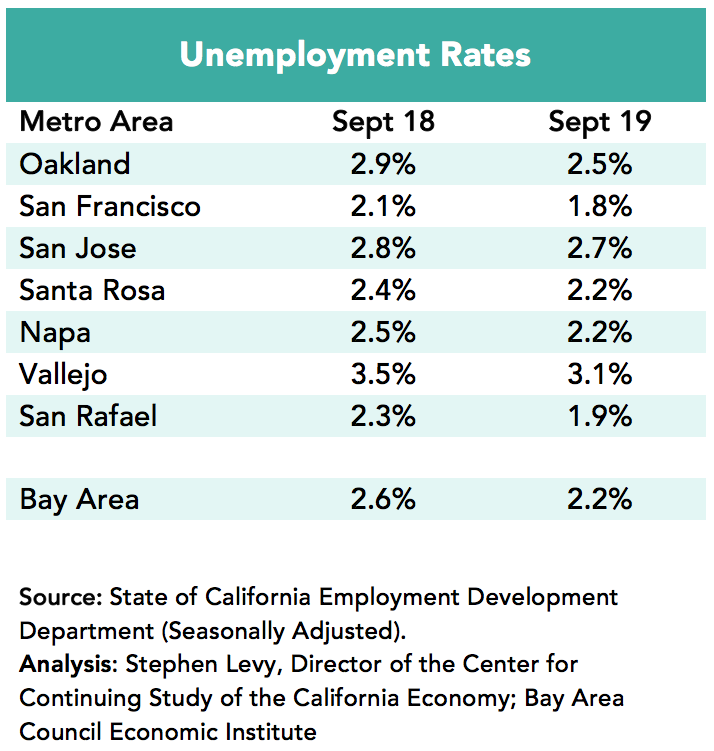
Regional labor force growth surged in September up 1.2% (51,900) from the year earlier levels.
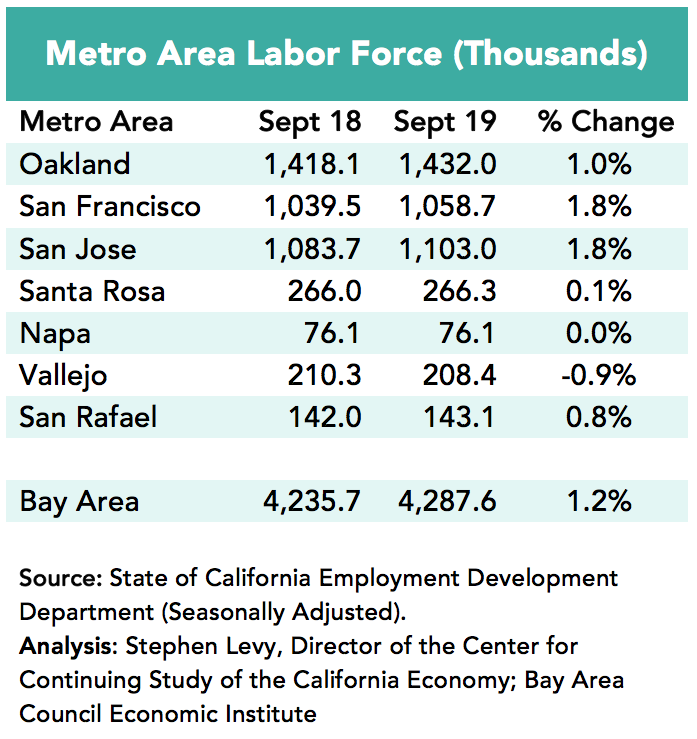
Year over year job growth has remained in a narrow range since early in 2017. This occurred despite slowing population growth and rising outmigration in the face of high housing costs. In September 2019 year over year job gains were at the top of the recent range.
Monthly job gains declined in September. Is this the beginning of a slowdown tied to slowing U.S. and world growth and labor shortages? Future months will clarify if this is the beginning of a trend.
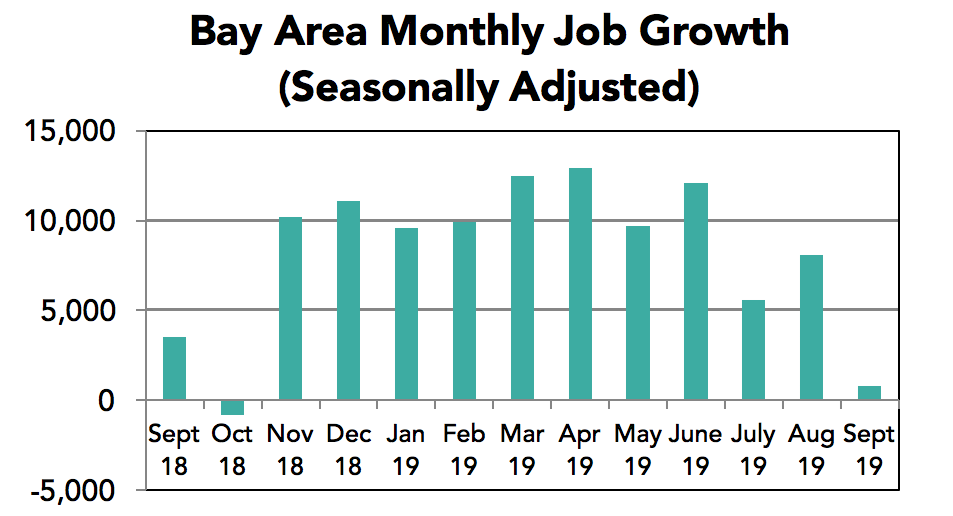
Bay Area job growth is far higher than population growth but the September data explains more of the job gains than in recent months’ data.
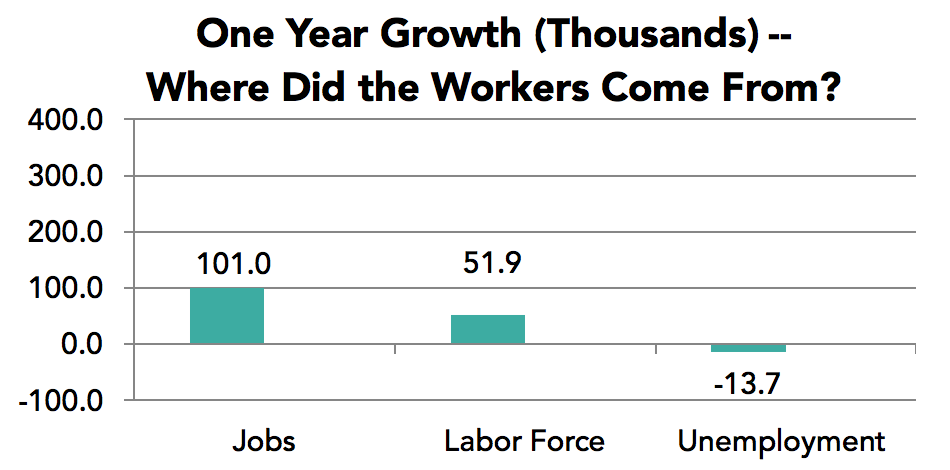
Labor force growth and declining unemployment account for 55,600 added jobs. The others could be accounted for by commuting or an increase in workers taking a second or third job. It is difficult to see future labor force gains unless the region can attract new workers with housing a key factor and unemployment is already near record lows. Immigration and housing policies are key to supporting future job growth.
Housing permit levels declined in the first eight months of 2019. The probable causes are increasing construction costs and a shortage of labor. In most cases fees are due when the permit is approved giving another reason to delay taking out the permit even though the project is already approved. On the other hand there seem to be a large number of projects openings and new projects in the pipeline but far yet from seeking permits.
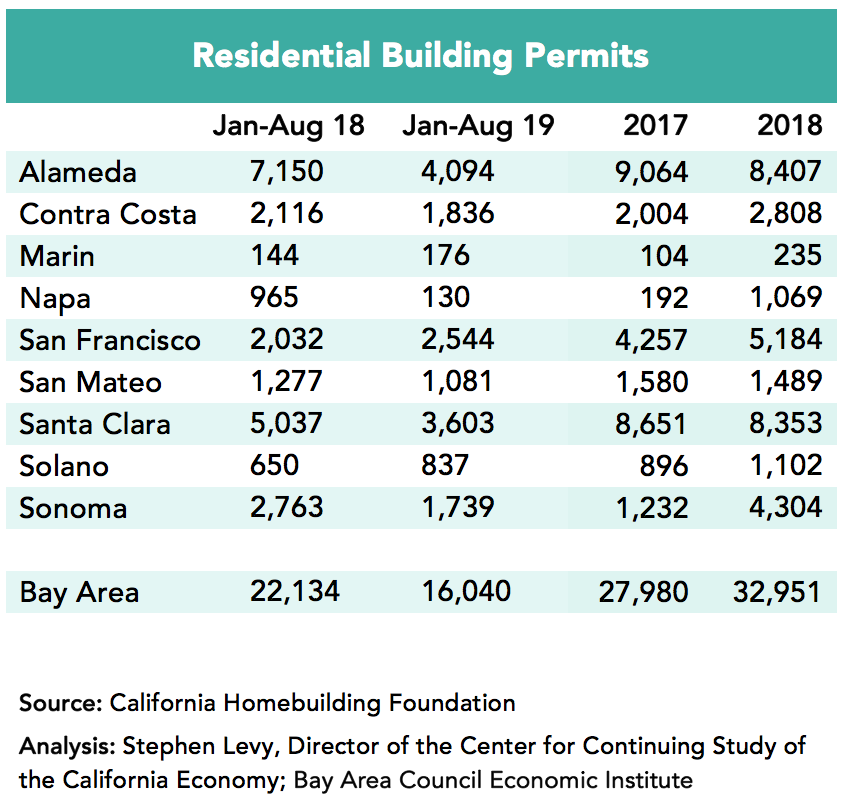
There is some evidence that the surge in resale home prices has peaked though that is a separate market from the rental market and even more separate from funding and approval for BMR units. Median resale prices continue to be slightly below year earlier levels. The Case Shiller price index, which matches comparable homes, has the Bay Area index up 0.2% for the year ending July 2019.
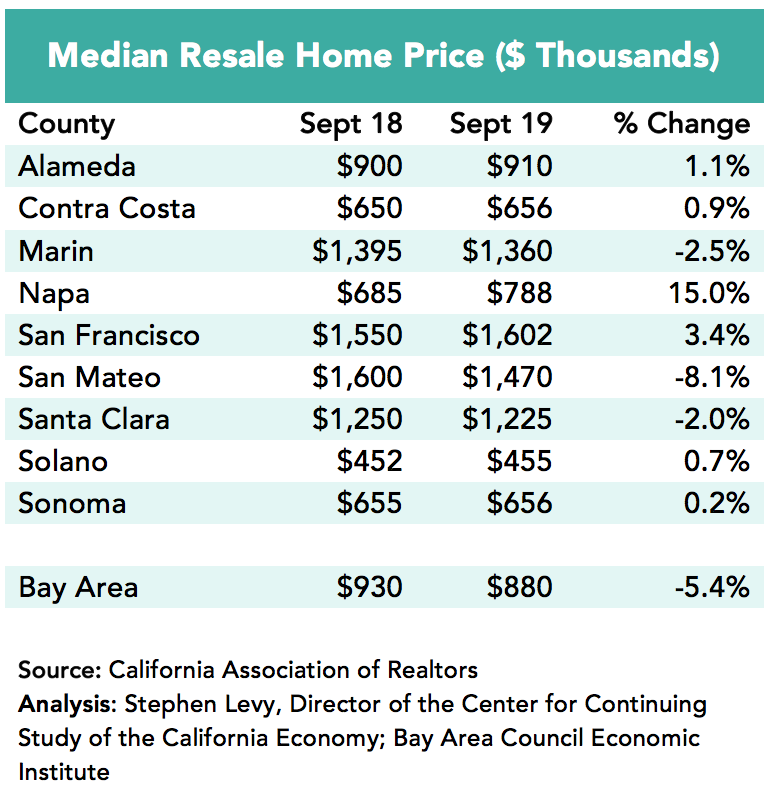
There have been a number of analyses of cost pressures and the need for projects to pencil out for equity and debt partners as well as developers. Here is one https://sf.streetsblog.org/2019/09/04/spur-talk-housing-development-by-the-numbers/. Here is another. https://ternercenter.berkeley.edu/blog/demystifying-development-math. This concept is well understood by Council members but seems hard to find acceptance among more general resident audiences.